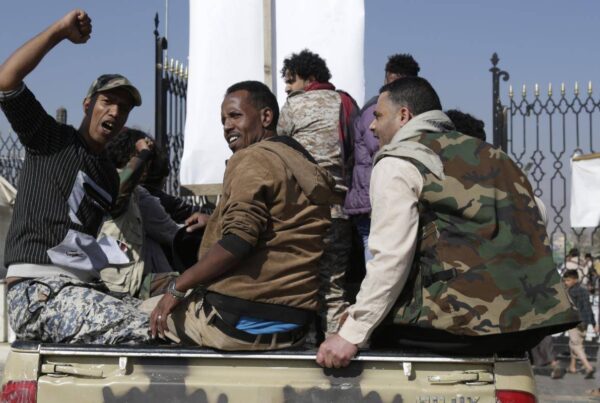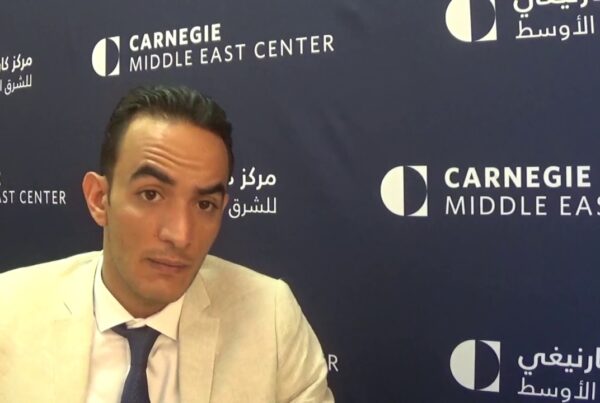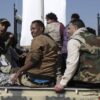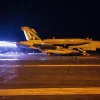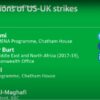With their apparently indiscriminate attacks, Americans have become the PR firm for a terrorist group, writes Farea Al Muslimi.
On December 5, Yemenis woke to one of the most horrifying massacres in recent memory. Militants dressed in army uniforms attacked a hospital inside the ministry of defence compound in the capital, Sanaa, killing more than 50 and wounding more than 150.
The victims were men, women and children; patients, doctors and nurses; locals and foreigners. Footage from surveillance cameras showed a gunman attacking a surgeon as he operated on a patient in the emergency room, and another casually lobbing a grenade into a crowd of people cowering on the floor.
The spontaneous public backlash against Al Qaeda in the Arabian Peninsula (Aqap) was more intense than anything the country has witnessed in decades. Aqap, which has long tried to cultivate an image of fighting on behalf of ordinary Yemenis against foreign aggression, was excoriated on TV, newspapers, radio and social media – all this was even before the group announced responsibility for the attack.
But then, on the following night after the government began broadcasting the videos, and as rage against Aqap was reaching a fevered pitch, an unmanned American military drone flying over the Radaa province, some 150 kilometres south-east of Sanaa, fired a missile into Yemen. It struck a vehicle in a wedding procession, killing 12 people and wounding dozens more. Almost instantly, the public discourse shifted, the anger redirected. Al Qaeda had almost destroyed itself but America came to its rescue.
In a country that has suffered almost a decade of US drone strikes and watched them obliterate hundreds of innocent lives, it mattered little that the “official” target in Radaa were several militants among the wedding goers. Rather, that drone strike reminded Yemenis, once again, that it is American terror that looms over them – constantly. As one Yemeni activist said: “If you escape Aqap, you don’t escape US drones.”
Aqap seized the opportunity. On December 22, the group’s military leader, Qassem Al Rimi, apologised for the hospital attack in a video statement and promised to pay compensation to survivors and victims’ families. The mistake, he claimed, was that the group had attacked the wrong building, that their actual target had been the drone control centre within the ministry of defence compound, jointly run by US and Yemeni military personnel. However implausible this story may be, the apology and promise of compensation are in stark contrast to America’s cold silence for the civilians it killed.
American intervention did years worth of public relations on behalf of Aqap. While this is the latest and certainly the most blatant example, it is far from the only instance of the US indirectly assisting Al Qaeda’s PR machine – and even its human resources department. It was actually in the Radaa district that a researcher, who recently visited the area, discovered a local Aqap leader who was complaining about new recruits not carrying out their regular religious prayers – they did not join Al Qaeda for ideological reasons, but because they saw the group as a means to avenge relatives killed in US drone strikes and for other reasons that have nothing to do with ideology.
In many parts of Yemen, it is not Aqap that is feared, but America. Not long ago, I visited the area of Khawlan, a 30-minute drive from Sanaa, where a US missile struck a vehicle full of passengers, killing everyone, including a local schoolteacher. He’d been with his cousin, the driver, who had picked up other people as a normal fare ride. How were the cousins to know that these people were on the US kill list? Children were waiting in the classroom for two hours the next morning before the news came that their teacher, Ali, was dead. Now, whenever teachers are late for class, students at the school become terrified that the US may have killed them.
US drones also undermine the legitimacy of America’s valuable ally in Yemen, president Abdu Rabu Mansour Hadi. In August, Mr Hadi visited the US, and while meeting with CIA director John Brennan a drone was fired into his hometown of Abyan. The president’s return to Yemen was followed by days of intensive drone strikes across the country. Mr Hadi then publicly defended the drone strikes – all of which made him look like more of an American stooge than a man of his people. Mr Hadi is already in an uphill battle to prove himself to Yemenis, as regional and western powers had selected him as the only name on the ballot to replace former president Ali Abdullah Saleh.
There are also economic consequences for drone strikes. For example, the same month that Mr Hadi was in the US, the Yemeni government announced that it qualified 18 international oil companies to bid on 20 onshore exploration blocks, mostly in the provinces of Hadramout and Mareb, which hold more than 85 per cent of the country’s oil reserves.
Hadramout and Mareb also happen to be the sites of regular US strikes that targeted not only suspected Islamic militants but also powerful local leaders, including a prominent religious cleric who preached against Al Qaeda and many civilians. This has had locals increasingly protesting against US drones and the central government’s complicity. This also exacerbates pre-existing tensions in Hadramout, where many Yemenis have long sought autonomy from Sanaa.
In such an environment, it is unclear how oil companies would mitigate the risk of their staff and operations being held hostage to angry locals after another drone strike.
While the US is the largest donor of humanitarian aid to Yemen, Washington has done an excellent job of having itself perceived as the enemy of the Yemeni people while helping Al Qaeda in ways Al Qaeda could never have dreamt of itself.
Farea Al Muslimi is a Yemeni activist and writer
On Twitter: @Almuslimi
